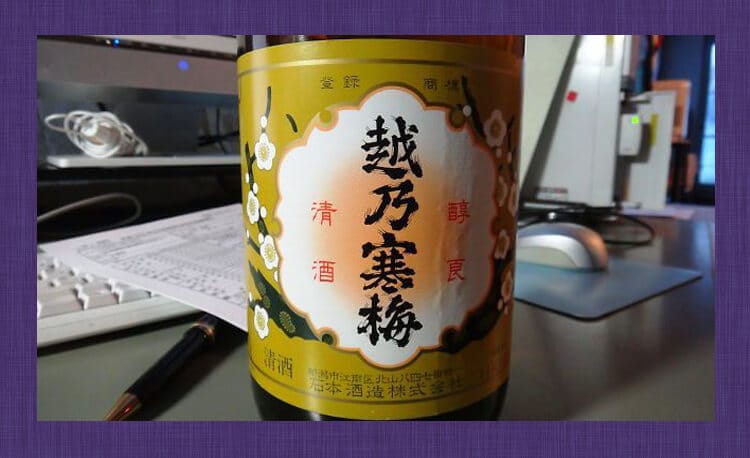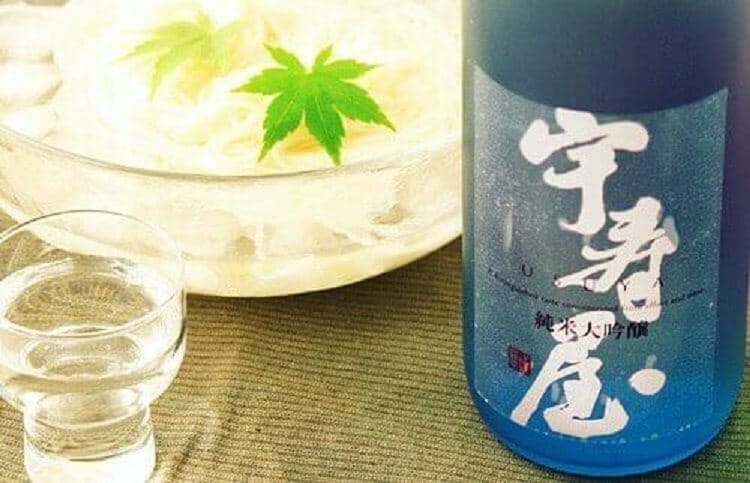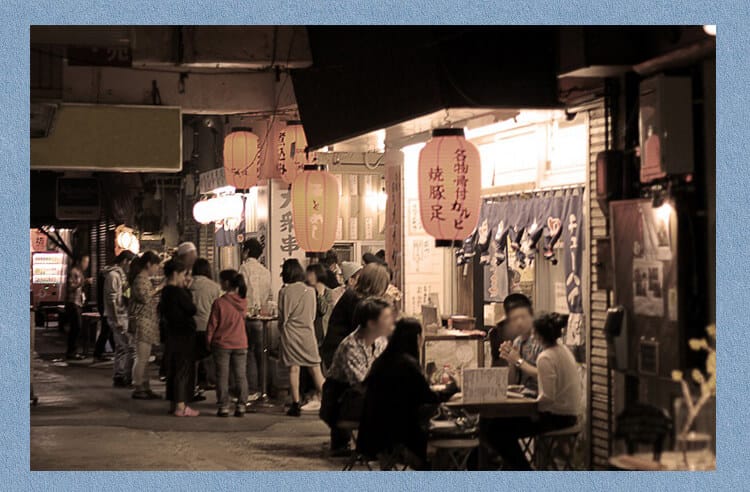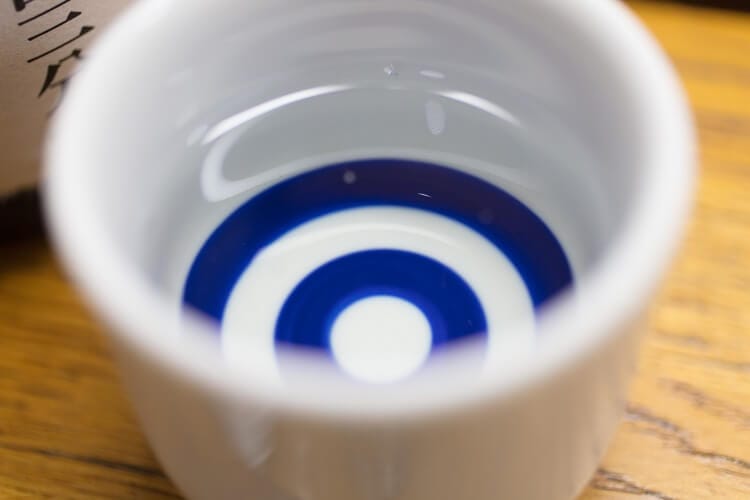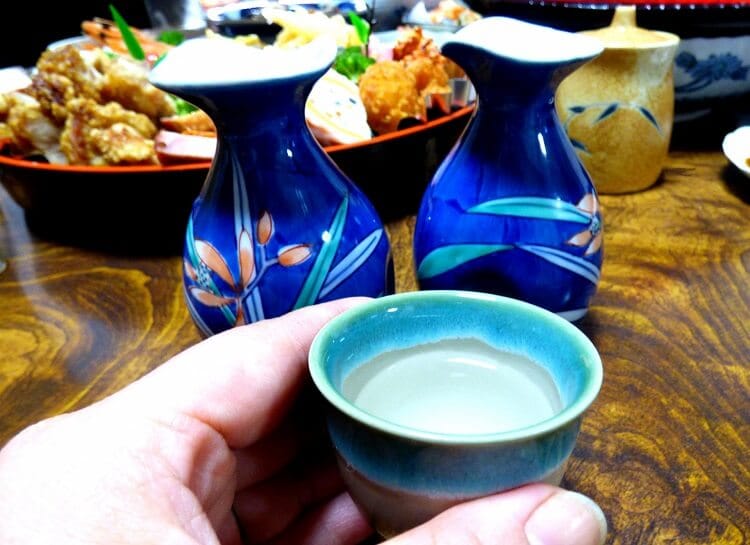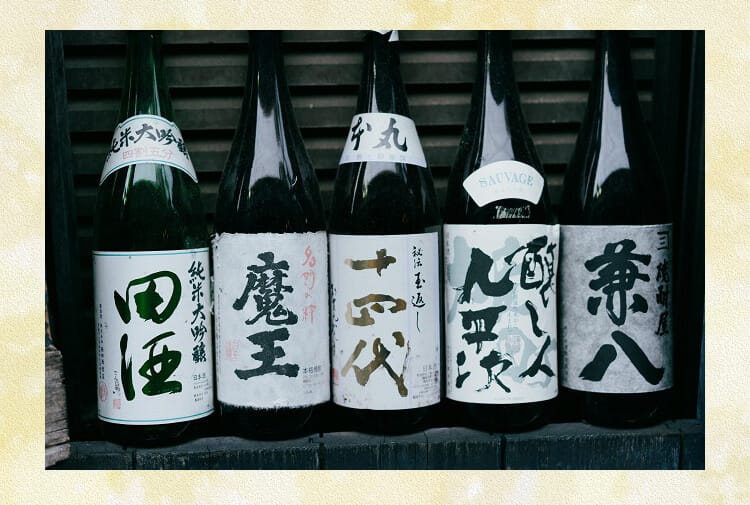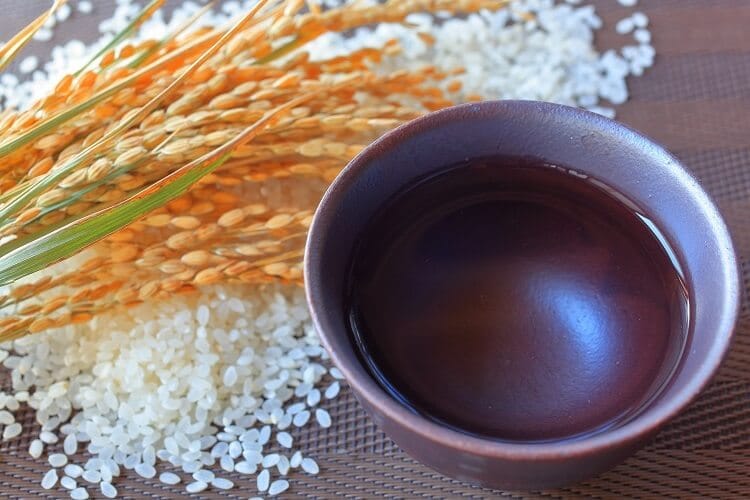
The rice milling ratio you want to check before buying sake. The rice polishing ratio is the ratio of polished (shaved) white rice for sake brewing to the original weight of brown rice.
This time,
- What is rice polishing rate
- Sake that achieves high rice polishing ratio
- Amazing Sake that achieved 99% polish
- Low-milled rice sake
I will explain.
What does “rice polishing rate” mean?
Have you ever seen this notation on a sake label?
| Raw material name | Rice (domestic), rice bran (domestic rice) |
| Raw material rice | Domestic rice 100% |
| Rice polishing rate | 50% |
| Alcohol | 15 degrees |
The number listed in the 3 number from the top is the milling rate. With this rice polishing rate, you can see how much rice was polished when making sake.
The method for measuring the rice polishing rate is as follows.
White rice weight ÷ Brown rice weight × 100
For example, if brown rice that was originally 100kg is polished to become 50kg after rice polishing, the rice polishing rate will be 50%, which may be referred to as Daiginjo sake.
It is said that the percentage of rice polished at home is 92%, so it is cut to about half the size of rice we eat!
The taste of sake made from polished rice
So what kind of impact does shaving rice have on sake?
The surface of brown rice is covered with persimmons (pericarp and seed coat), and inside it is endosperm that contains protein and fat. If you make sake with these left over, fermentation may progress too much.
In addition, amino acids and fatty acids of proteins cause miscellaneous tastes and scents (unpleasant odors that occur when sake is stored).
To avoid that, take time to polish the rice. Polished rice can be grain-sized!
Sake made from rice that has been polished and polished until the rice shines like a small pearl.
- A gorgeous ginjo aroma is brewed
- Clean taste without miscellaneous taste
- Excellent taste and sour balance
With features such as.
There are many processes in sake brewing, but you can see how important rice milling is!
Classification of specific name liquor divided by rice polishing rate
The names of sake divided by the rice polishing rate are as shown in the table below.
| Junmai
No alcohol added |
Rice polishing rate |
Honjozo
Add alcohol (within 10%) |
| Junmai Daiginjo | 50% or less | Daiginjo |
| Junmai Ginjo / Special Junmai | 60% or less | Ginjo / Special Honjozo |
| 70% or less | Honjozo | |
| Junmai | No rice polishing rate |
"National Tax Agency: Overview of Sake Process Labeling StandardsCreated by the author from
The above is called “named sake”, and other sakes are “ordinary sake”.
Refined pure rice Daiginjo [Time for rice polishing]
For example, 20% of the pure rice daiginjo brewing of Daisai, which is popular not only in Japan but also overseas. In other words, it is a rice polishing rate of 23%. This is the number of days to polish rice is 7 days. It takes 168 hours.
The reason why it takes so much time is because it is necessary to polish it slowly so that the rice does not break by frictional heat.
In the center of rice, there is a part called “Kokoro” that is necessary for sake brewing. The heart white is a soft part, and the rice milling method with speed may cause the water in the rice to evaporate and break the heart white.
In order to prevent it, rice milling is done slowly, but it is not the only difficulty in rice milling.
If the rice mill stops in the middle of the process, the temperature of the rice will drop, and the rice may break down due to moisture that evaporates rapidly.
So craftsmen need to stay up all night and watch over the rice.
Surprising high polished rice ratio! Junmai Daiginjo recommended 5 selection
It became a hot topic when the rice cake festival made sake with 23% of the rice polishing rate, but now sake with a high rice polishing rate exceeding that of the rice cake festival is being made one after another.
Here, we will introduce the pure rice ginjo sake that goes beyond the rice milling ratio of Sakai Matsuri and has a refined taste and aroma.
Even if you usually drink regular alcohol, why not keep it at home for special occasions?
1. Recommended for bag hanging rice cake, rice polishing rate 18% [蓬莱 Sudo de Sake Junmai Daiginjo] Watanabe Sake Brewery
The features of the sake that are surely named are “Bag-hanging bowl” and “Hayabo-Iki”.
A bag-hanging jar is a method of filling a sake bag made of cotton with mash and then tying it with its mouth and hanging it. Reliable only on gravity because no pressure is applied. It uses a traditional brewing method that takes time and effort, with the casket falling from the bag.
The bottle is also quickly fired in a bottle (do not fire in the tank in order to keep the freshness of freshly squeezed as much as possible. A freshly squeezed fresh taste is alive, and you can enjoy a wide and rich umami taste without losing the flavor of rice.
The raw rice is Yamada Nishiki, which has a refreshing taste.
蓬莱 Removed 蓬莱 Super de S sake is very delicate. Always store in a refrigerator below 6!
| Sort | Junmai Daiginjo |
| How to read the product name | Horai just salmon salmon |
| Raw Rice | Yamada Nishiki |
| Rice polishing rate | 18% |
| Alcohol degree | 16 degrees |
| Sake degree | 0 |
| acidity | 1.1 |
| Internal capacity | 720 ml |
| taste | Slightly dry |
| Recommended way to drink | After 10 minutes from the refrigerator |
| 蓬莱 Super de S sake Junmai DaiginjoSee details |
2. The best rice milling rate 8% in Japan at the fair was also recommended [Kurafuku Junmai Daiginjo Super Rice] Kurofuku Sake Brewery
The raw rice is Hitachi Nishiki, a brewery suitable rice produced in Ibaraki Prefecture. Hitachinishiki, which has a clear and refreshing taste, is characterized by large brown rice, low protein content, and a large heart white (starchy starch in the center of rice).
Kurufuku ultra-milled rice is a pure rice daiginjo with no added water, taking advantage of the characteristics of Hitachi Nishiki. A rice polishing rate of 8% means that rice is polished smaller than beads. That's why you can enjoy refined delicate taste and fruity ginjo aroma.
In 2016, won the 2016 place in the “SAKE COMPETITION 1 Super Premium category” to determine the best sake!
1 book of sake that you want to try again and again.
| Sort | Junmai Daiginjo |
| How to read the product name | Raifuku |
| Raw Rice | Hitachi Nishiki |
| Rice polishing rate | 8% |
| Alcohol degree | 17 degrees |
| Sake degree | 0 |
| acidity | 1.3 |
| Internal capacity | 720 ml |
| Kurufuku Junmai Daiginjo Super RiceSee details |
3. Plenty of umami with a specially designed bowl! Recommended rice milling rate 7.4% [Turtle shell Kotobuki Kotomi Junmai Daiginjo] Tanaka Brewery
This year's 7.4 polishes pure rice brewing sake with a rich flavor using sake rice “Kamenoo”. Turtle tail is suitable for sake brewing, but it is a phantom rice with ancestors such as Koshihikari and Sasanishiki. The flavor of the finished sake is refreshing and is characterized by its refined ginjo aroma.
Last year, it became a hot topic with 7.6%, but this year it has been further refined to 7.4%, realizing a more fragrant and refreshing dryness.
The disadvantage that the lower the milling ratio is, the lighter the taste is and the individuality of sake is lost.
9 Monthly 15 limited 300 books were shipped out. If you are interested, hurry to purchase!
| Sort | Junmai Daiginjo |
| How to read the product name | Kamenokou Kobukikame Shinin |
| Raw Rice | Turtle tail |
| Rice polishing rate | 7.4% |
| Alcohol degree | 16 to 17 degrees |
| Internal capacity | 720 ml |
| taste | Slightly dry |
| Turtle shellSee details |
4. Masaharu Fukuyama's recommended rice milling ratio 7% [Reverberation SUPER7 Junmai Daiginjo] Shinzawa Brewing
Reverberation named by Masaharu Fukuyama, a musician who likes sake. It is also famous for being used at the Grammy Awards reception party.
There are polished 9% and 8% in reverberation, but this time we will introduce the polished 7% Junmai Daiginjo.
The fragrance is fruity enough to resemble a peach or melon. The taste is just a delicate word, but when you put it in your mouth, you can feel the plump umami of rice and enhance the taste of high-quality meat and seafood.
One of the same brewery brands, the special pure rice sake “Hakurakusei” is served in ANA International First Class.
“Reverberation SUPER140” is brewed by Kuramoto, who has been recognized internationally for the skill and taste of sake brewing for 7 years. Since the number of shipments is limited, I want to get it early.
| Sort | Junmai Daiginjo |
| How to read the product name | Super Super |
| Raw Rice | Kura no Hana |
| Rice polishing rate | 7% |
| Alcohol degree | 16 degrees |
| Internal capacity | 720 ml |
| Reverberation SUPER7 Junmai DaiginjoSee details |
5. Ultimate rice milling rate 1% pure rice Daiginjo is highly recommended [Mitsuaki] Kashiwakawa Sake Brewery
Junmai Daiginjo “Mitsuaki” is an unprecedented rice milling rate of 1%. The news that it was released in 2017 and sold out in only 3 months was a surprise and regret for Japanese sake fans.
The size of the rice polished to 1% is as small as the number of eggs of a few children. There must be many people who wanted to taste the ultimate 1% sake.
Polished 1% Gwangmyeong completed by self-polishing contract cultivated rice and paying maximum attention to raw material management so that there is no difference in the quality of 1 and 1. The taste is like a lychee with a weak acidity when compared to fruit. The light that has been polished over 1800 time has a sweet and refreshing taste, and after a while, the rich taste of rice will softly spread in your mouth.
Last year in 2017, Gwangmyeong was released on 10 month 1 day. If you were regretful because you couldn't get it last year, hurry up. The world-limited 150 book sale may be in time, ♪
| Sort | Junmai Daiginjo |
| How to read the product name | Komyo |
| Raw Rice | Dewa |
| Rice polishing rate | 1% |
| Alcohol degree | 15 degrees |
| Sake degree | −2 |
| acidity | 1.4 |
| Internal capacity | 720 ml |
| Recommended way to drink | Cool to 5 ℃ |
| Junmai Daiginjo MitsuakiSee details |
Over 216,000 yen! Why Daiginjo is expensive
Well, we introduced Junmai Daiginjo, which was made by cutting rice to the limit, but the price is naturally higher.
“Why is it so expensive, even though it is a daiginjo at the level of the fair?”
Will you sigh?
Kitayuki Daiginjo YK35 sake
Titanium gold
216,000 yen (1800ml)Kitayuki Shuzo (Niigata)
It seems that the titanium gold container itself costs 194,250! ? (Lol) pic.twitter.com/rmoLo5wp1p— Susumu Kodai ⚓WARP (◀ ︎ Ichikawa self-restraint)‼ ️ (@newkodai_warp) October 29, 2015
Certainly Daiginjo is delicious!
Among them, “Kitayuki Daiginjo YK35 sake sake titanium gold” which polished Yamada Nishiki to a polished rice ratio of 35% is not Junmai Daiginjo, but it is the most expensive in Japan. The price is 216,000 yen!
The reason why Daiginjo with a rice milling ratio of 50% or less is expensive is
・ To polish the rice, you must use good quality rice that is not broken by friction (preferred rice for brewing). So it costs rice
* 70% of the price of sake is the cost of rice (*).
・ The more you polish, the smaller the size of the rice, so the more rice you use
・ Rice milling time for polishing rice becomes longer and costs such as electricity bills increase.
Such as it will be mentioned.
In addition to the above, “Kitayuki Daiginjo YK35 Sake Titanium Gold” has the highest price in Japan because it uses a pure titanium container that can age sake for decades. is.
Daiginjo is an amount that I can't afford, but I am curious about the taste after aging!
If you have enough money, how about using this?
- Aged until my child was born and purchased and married. It's so fashionable to open and enjoy a seal in front of everyone at a sunny wedding ceremony.
- You may also give your child a “Kitayuki Daiginjo YK35 Sake Titanium Gold” at the wedding and say “Please let this sake ripen together for a long time”!
Summary: Is sake with a high percentage of polished rice full of miscellaneous tastes?
So far we have introduced Daiginjo, which has a low rice yield rate. Then, isn't it worth drinking sake that has a rice polishing ratio of 70% or more?
There are many people who choose sake based on the label “Rice Milling ◯%” because shaving the rice reduces the miscellaneous taste.
Tongues that are used to the refreshing taste of sake, which has a low percentage of polished rice, may have the impression that ordinary sake drinks at packs and izakayas have a rich taste.
However, there are also breweries that make “barely ordinary sake” that can be drunk as a supper or as a cooking liquor at a reasonable price, while making efforts to improve the quality of sake.
For example, “ WILD-SIDE, etc."The price is 2750 yen. It has a sweet and sour mouth that is reminiscent of pineapple and has a clean aftertaste.
Surprisingly, the raw rice is Yamada Nishiki. Because it uses non-grade rice (such as foreign rice), it is treated as ordinary sake. The rice polishing rate is 70%.
Other popular sake can be found in the super dry Koshino Kagetora and Kamokuru, the highest peak of ordinary sake.
Certainly, the specified sake with a low rice polishing rate has the refreshing and sharpness that goes through the throat and throat. However, for those who feel that rice has no personality, the choice of regular sake is also ant.
The next article will approach the charm of ordinary sake, so please look forward to it!
Reference:
*The Development Bank of Japan “Current Situation and Growth Strategy of the Sake Industry”

